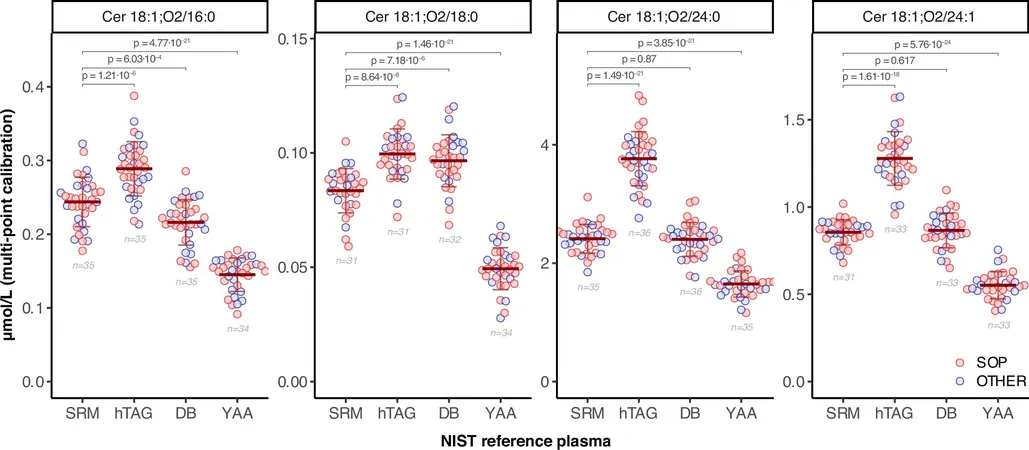
Revolutionary Trial Sets New Standards in Lipidomic Technologies – What This Means for Your Health!
2024-10-10
Author: Daniel
The groundbreaking results from the first phase of the Ceramide Ring Trial have just been unveiled in Nature Communications, marking a pivotal moment in the field of lipidomics that could transform clinical applications! This ambitious collaboration involved the expertise of researchers from the University of Vienna alongside scientific teams from Singapore, Julich, and Espoo, all working under the aegis of the International Lipidomics Society (ILS).
Lipidomics, the large-scale investigation into the pathways and interactions of cellular lipids within biological systems, plays a crucial role in illuminating the complex ways lipids influence our health and disease. During this study, researchers focused specifically on ceramides— plasma lipids intricately linked to significant health issues, including cardiovascular diseases. With a global push to establish accurate ceramide reference values, the Ceramide Ring Trial stands as a monumental step forward.
What is a Ring Trial?
But what exactly is a ring trial? In essence, it is a method where numerous laboratories independently analyze the same samples to compare outcomes—ensuring that measurements are reliable and consistent across different research settings. The significance of this process cannot be understated; it enhances standardization and quality control in scientific testing, which is essential for establishing trustworthy data.
After seven years of tireless collaboration, results from 34 laboratories spanning 19 countries have culminated in this landmark study. By narrowing their focus to human plasma and serum, the researchers examined the concentration levels and variabilities of four distinct ceramide species. This targeted approach not only simplifies the investigation but also reinforces the study's reliability.
The Role of Ceramides
Ceramides aren't just biochemical components; they serve as biomarkers for various diseases, particularly in relation to cardiovascular health. Throughout the trial, participants employed a mixture of preferred analytical methods while adhering to standardized protocols to quantify ceramides in the widely used NIST1950— a key standard reference material provided by the National Institutes of Standards and Technology (NIST). They also utilized specially formulated mixtures of ceramide standards sourced from Avanti Polar Lipids.
Robert Ahrends, from the Department of Analytical Chemistry at the University of Vienna and the study's corresponding author, remarked, "A number of valuable lessons can be learned from the results of our interlaboratory comparison." He emphasized that standardization is imperative for minimizing variations in testing procedures and fostering consensus regarding the concentrations of analytes of interest.
Implications for Health
The findings not only set a baseline for future biological and medical studies related to ceramide-associated diseases, but they also provide crucial insights into the biological distinctions among various populations, including healthy individuals, those with high cholesterol levels, and people from different ethnic backgrounds.
As we stand at the forefront of this exciting era in lipidomics, the implications for personalized medicine and targeted therapies based on lipid profiles appear more promising than ever. Stay tuned, because the findings of the Ceramide Ring Trial could very well redefine how we approach the diagnosis and treatment of lipid-related diseases in the near future!



 Brasil (PT)
Brasil (PT)
 Canada (EN)
Canada (EN)
 Chile (ES)
Chile (ES)
 España (ES)
España (ES)
 France (FR)
France (FR)
 Hong Kong (EN)
Hong Kong (EN)
 Italia (IT)
Italia (IT)
 日本 (JA)
日本 (JA)
 Magyarország (HU)
Magyarország (HU)
 Norge (NO)
Norge (NO)
 Polska (PL)
Polska (PL)
 Schweiz (DE)
Schweiz (DE)
 Singapore (EN)
Singapore (EN)
 Sverige (SV)
Sverige (SV)
 Suomi (FI)
Suomi (FI)
 Türkiye (TR)
Türkiye (TR)